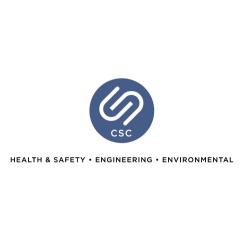Occupational and Residential Wood Smoke Exposure Concerns
The industrial hygiene professionals at Clark Seif Clark identify respirable exposure risks to help protect workers and the general public.
If the smoke from a wood fire in a business or home is not properly exhausted, combustion byproducts such as gases and microscopic particles can accumulate and expose the eyes and respiratory system and can result in a variety of negative short-term and long-term health effects.
During the cold winter months, many people burn wood in their homes for heat and ambience. While this can provide for an economical way to heat a home, some people could be exposed to wood smoke in the air they breathe. Workers in some occupations may also be exposed to wood smoke on a daily basis.
The smell of burning wood is pleasant to some people, but even though wood is a natural substance, exposure to wood smoke can cause concerns. The U.S. Environmental Protection Agency (EPA) reports the smoke from burning wood contains a complex mixture of gases and fine particles (also called particle pollution, particulate matter or PM). In addition to particle pollution, wood smoke contains several harmful air pollutants, including: benzene, formaldehyde, acrolein and polycyclic aromatic hydrocarbons (PAHs). Carbon monoxide is also produced during the burning of wood.
“If the smoke from a wood fire in a business or home is not properly exhausted, combustion byproducts such as gases and microscopic particles can accumulate and expose the eyes and respiratory system and can result in a variety of negative short-term and long-term health effects,” said Derrick A. Denis, V.P. of Indoor Environmental Quality (IEQ) at Clark Seif Clark (CSC). “The EPA states that wood smoke can affect everyone, but children, teenagers, older adults, people with lung diseases, including asthma and COPD, or people with heart disease are often the most vulnerable.”
Short-term exposures to particles from wood smoke can aggravate lung disease, causing asthma attacks and acute bronchitis, and may also increase susceptibility to respiratory infections. Long-term exposures have been associated with problems such as reduced lung function and the development of chronic bronchitis, and even premature death. Some studies also suggest that long-term PM 2.5 exposures may be linked to cancer and to harmful developmental and reproductive effects, such as infant mortality and low birth weight.
To identify occupational and residential environments where airborne pollutants from wood smoke or other sources may be present, CSC offers comprehensive assessments, including air testing and air monitoring services. CSC also recently sponsored an educational video about wood smoke exposure that can be seen at: https://youtu.be/2Eo-oodwd-c
To learn more about this or other occupational, environmental, indoor air quality, health and safety testing services, please visit www.csceng.com, email csc@csceng.com or call (800) 807-1118.
About Clark Seif Clark
CSC was established in 1989 to help clients in both public and private sectors address indoor air quality, occupational, environmental, and health and safety (EH&S) issues. CSC is a leading provider of these services with multiple offices along the western seaboard and southwest. The company believes in science-based protocols and has a strong background in engineering, making them the preferred environmental consultants to industrial clients, healthcare facilities, architects, schools, builders, contractors, developers and real estate professionals.
( Press Release Image: https://photos.webwire.com/prmedia/12710/207193/207193-1.jpg )
WebWireID207193
- Contact Information
- Paul Cochrane
- President
- Cochrane & Associates, LLC
- Contact via E-mail
This news content may be integrated into any legitimate news gathering and publishing effort. Linking is permitted.
News Release Distribution and Press Release Distribution Services Provided by WebWire.

